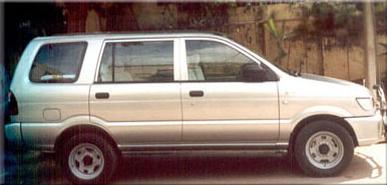Maratha - Rajputs Relations
|


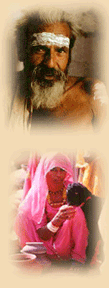





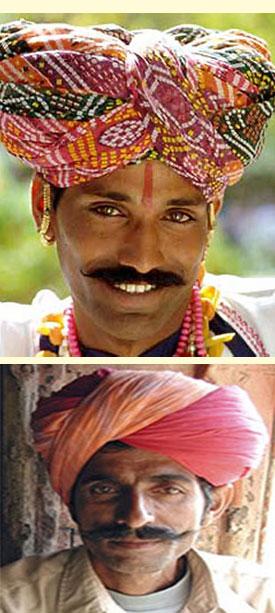
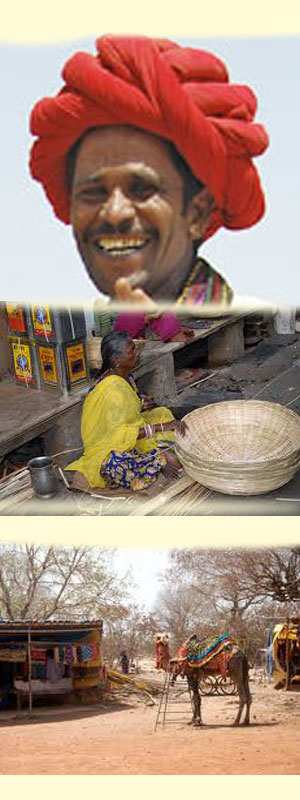
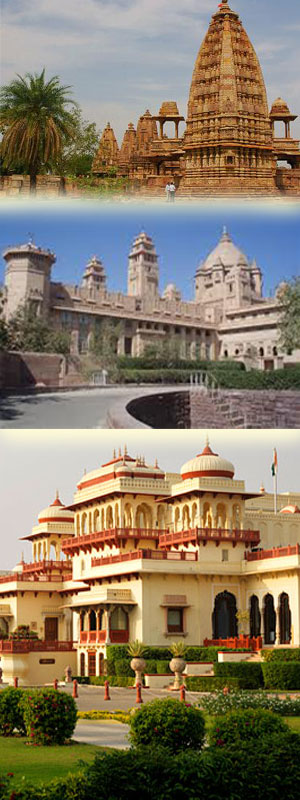

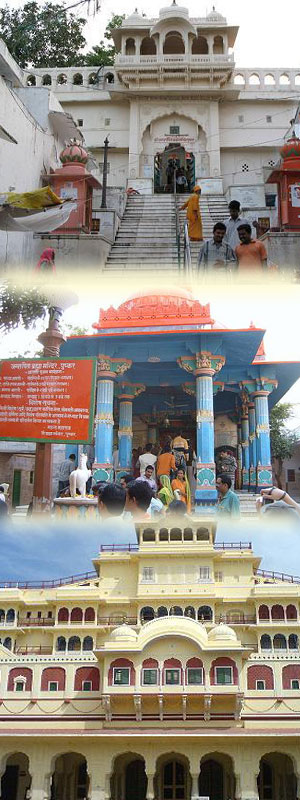 |
 |
|
 |
|
 |
|
 |
|
|
|
|
|
|
|
Maratha - Rajputs Relations |
|
The rise of Maratha in the 17th
century is an important event in Indian History. There were many causes of
their rise. The geographical situation, Bhakti movement, literature and
language, the dominant influence of the Hindu power as well as the Deccan
policy of the Mughal emperors – all contributed significantly to the rise of
the Maratha power. Shivaji united together the fragmented Marathas scattered
in different parts of Maharashtra. He organized them and created an
independent state. This led to the direct Maratha – Mughal confrontation. A
number of Rajput rulers were sent to the Deccan a Mughal commanders and this
resulted in the first phase of Rajput-Maratha contacts. |
|
|
|
|
Maratha Expansion in the
North and reaction of the Rajputs |
|
By the end of 17th
century the decline of Mughal power had set in. In the last
twenty – five years of his life Aurangzeb tried hard to subdue
the Marathas but he was not successful. Besides this, the
Marathas started to raid the rich provinces of Malwa and
Gujarat. In the year 1699 they attacked Malwa for the first
time. It was twice attacked by them during the last days of
Aurangzeb’s reign. In the year 1706 they also defeated Mughal
army in the south Gujarat. But at that time the aim of the
Marathas was to harass the empire and divert the Emperor’s
attention from his offensive activities in the Deccan. But after
his death mutual rivalries in the Mughal court created confusion
and chaos in the distant provinces and provided greater
opportunity for the Maratha advance into Malwa and Gujarat. In
1710, Maratha sardar Ganga crossed – Narbada and after exacting
twenty five thousand rupees from the people on the way he
reached as far as Ujjain. This and successive advances of the
Marathas into imperial territory were alarming not only for the
Mughal emperor but also for the states of Rajasthan. There were
two basic causes for this anxiety on the part of the rulers of
Rajasthan.
One reason was that they were looking with covetous eyes at
Malwa and Gujarat and hence considered Maratha power as a
stumbling block in their hope of exploiting the declining Mughal
power. Marwar wanted to occupy Gujarat, and Amber had an eye
over Malwa. Another reason was that the powerful Marathas would
then turn to grab the states of Rajasthan particularly Mewar,
Bundi, Kota and Marwar. This was a danger signal to the Rajputs
too thus Malwa and Gujarat became vital and sensitive points in
the defence strategy of the Mughals, and the survival of the
empire and independence of neighboring Rajput states were very
largely dependent on effective and timely protection of these
border provinces. Hence was felt the necessity of appointing
there a governor like Sawai Jai Singh of Amber who was
considered a suitable vassal price for dealing with the Marathas
– both as a diplomat and also as a general. So he was appointed
the governor of Malwa. Jai Singh testified his appointment by
his brave and vigorous resistance against and victories over the
huge Maratha army in May 1715. but the effect of these victories
proved short lived. Soon after Sept. 1715 Mai Singh was summoned
to the court and was entrusted with the task of suppressing Jats.
For the next two years he remained completely engrossed in the
Jat campaign. His prolonged absence from Malwa encouraged the
Marathas to resume thir raids into that province. His campaign
against the Marathas proved abortive.
A new strategy of Maratha expansion began with Bajirao taking
over as Peshwa in 1720 A.D. Now the systematic expansion towards
north became the definite and declared policy of the Marathas.
In accordance with this policy in 1723 he made an incursion into
Malwa, collected chauth, which deeply hurt the Mughal Empire.
The ambition and security of the princes of Rajasthan received
its first set back in 1724 when the Marathas attacked the
boundaries of Mewar, Maharana Sangram Singh II of Mewar sought
the help of other rulers of Rajasthan to ward off Maratha
attacks. This we learn from a “Kharita” written on 25th Nov.
1724 by him to Jai Singh, The Maharana wrote that the “Deccanis
always created disturbance in his territory and they would not
give up their habits unless they were properly chastised.” This
appeal of Maharana did not bear any fruit. The Marathas began
their attacks on Rampura, Kota and Bundi too. These raids gave a
foretaste of the calamities to the Rajasthan kprinces. Hence
maharana sought the help of Emperor against the Marathas.
However, it seems that the Mughal Emperor did not take these
attacks with the seriousness it deserved. Sangram Singh and Jai
Singh also apprised the Nizam with the situation regarding the
Maratha raids into various parts of Rajasthan. Not havingh
succeeded in securing any assistance from either the Nizam or
the emperor, jai Singh tried to involve Kota and Jodhpur in a
military organization. These moves of the Rajputs princess
naturally alarmed the Marathas, so Shahu sent his two officers,
Gopalpant and Appaji Pant, in Mewar to dicsuss the whole matter
with the Maharana.
But these talks bore no fruit and there was no let at all in the
Maratha activities. Hi 1726 Krishanaji Pant, Baji Pant and
Ambaji Pant attacked Kota and Bundi. So also the Maratha
chieftain attacked Jodhpur too. Mewar was also not spared of
these raids. Therefore, fresh efforts to unite the Rajput rulers
began. Maharana wrote to Jai Singh that if this evil were not
nipped in the bud the virus would spread all over Rajasthan. it
appears that Jai Singh not only gave an assurance to Mewar, but
also persuaded Durjan Sal of Kota to join the alliance against
the Marathas. |
|
|
|
|
Battle of Mandsaur |
|
These remedies were ineffective to beat back
the Maratha expansion. They continued to extort wealth from
Mewar and other adjoining areas of Rajasthan. In 1726 Baji Bhim
visited Mewar arid realized Chauth from a Mewar district in
1728, Bajirao forced the rulers of Dungarpur and Banswara to Pay
to him. In this way Marathas raids continued. There are some
letters which show that when Chhatrapati Shahu’s attention was
drawn towards these raids, he directed his sardars not to
interfere in the territories of Mewar and Amber. It appears that
these letters did not have the desired effect and the raids
continued. In the mean time the Maratha raids endangered the
Mughal emperor no less than the Rajputs. Strategically and from
the security point of view Malwa became an important focal point
for the Mughal Empire and Rajasthan. Hence in 1732, Jai Singh
was appointed the imperial governor of Malwa for the third time.
In order to drive out the Marathas from Malwa, he in turn
obtained the military help from Mewar. The Marathas on hearing
of it, Holkar and Sindhia entered Malwa and encircled Jai Singh
at Mandsaur and gave him a crushing defeat. He was compelled to
agree to pay 6 lacs in cash and promised to cede thirty-eight
paraganas in lieu of Chauth. His defeat dealt a shattering blow
to the prestige of the Rajasthani rulers in general and Jai
Singh in particular it also became obvious that even the
combined armies of Rajputs and Mughals were no match to the
Marathas. |
|
|
|
|
Bundi Affair |
|
Not only this, the
Bundi affair brought the Marathas as mediators in Rajasthan.
Sawai Jai Singh was keen to enhance his position in Rajasthan.
The first victim of his ambition and aggrandizement was Budh
Singh of Bundi, whom be expelled and placed his own son in law,
Dalal Singh on the throne. This meddling with the internal
affair of a princely state gave rise to a complicated situation
and the dethroned hose tried to seek the support of an external
power stronger than Jai Singh. According to Vamsh Bhaskar,
Pratap Singh Hada, the elder brother of Dalal Singh, was sent to
Poona to meet the Peshwa and the other prominent Maratha sardars
to enlist military support for Budh Singh. The assistance was
promised and on the 22nd April, 1734 Holkar restored the
authority of Budh Singh. But the weak and imbecile Budh Singh
could not retain his throne for long. After the Marathas forces
had departed Jai Singh again removed him, and obtained also the
approval of the Mughal court for this action.
However, the Maratha interference in Bundi was an event of great
political significance because the Rajput princes were then at
least apparently within the hold of the Mughal Empire. This was
a prelude to future interventions at frequent interval.
It was for the first time that the Marathas took sides in the
domestic affairs of a State in Rajputana. It greatly alarmed the
Rajputs and created a feeling of terror amongst them. Their
weakness was exposed. Thinking minds in Rajasthan began to
apprehend danger from the Marathas, and the Rajput princes saw
in the Maratha move not only an obstacle in their own dominions.
Malwa had already been for all practical purposes a Maratha
province and its proximity menaced the safety of Mewar. Maharana
Jagat Singh of Mewar was, therefore, naturally very anxious to
safeguard the territorial integrity of his kingdom. Similarly,
Jai Singh’s plan of forming a large state in Malwa for his
younger son, Mdadho Singh, with Rampura as nucleus was severely
hampered. He wished to carve out a separate state so as to save
Jaipur from a future conflict. Maharaja Abhay Singh of Jodhpur
was also keenly desirous of expanding his state. |
|
|
|
|
Hurda Conference |
|
By the time Rajput
rulers had realized that the weak and tottering Mughal power was
incapable of resisting the Maratha expansion, and felt the
imperative necessity of organizing self-defence. They planned to
unite against the Marathas to oust them even from Malwa. Some
form of collective action was the need of the hour. They could
not survive with honour without pooling their efforts against a
common danger. This was the beginning of an era of Rajput unity
in the face of a common foe.
Now the Rajput rulers decided to meet in a conference at Hurda.
This was a significant event, as it afforded an opportunity for
the meeting of all the important rulers of Rajasthan, who held
even antagonistic opinions on several other vital matters. It
was attended by Maharana Jagat Singh of Mewar, Sawai Jai Singh
of Jaipur, Abhay Singh of Jodhpur, Durjansal of Kota, Zorawar
Singh of Bikaner, Dalal Singh of Bundi, Gopal Singh of Karauli,
Bakhat Singh of Nagaur and Raj Singh of Kishangarh. Prolonged
and feverish diplomatic activities preceded the conference.
After long deliberations an agreement was signed on 17th July
1734. Its terms were as follows.
1. All are united in good and in evil and none will withdraw
there from, on which oaths have been made and faith pledged
which will be lost by whoever acts contrary thereto. The honour
and shame of one is that of all, and in this everything is
contained.
2. No one shall countenance the traitor of another.
3. After the rains, the affairs shall commence and the chiefs of
each party will assemble at Hurda. If from any cause the head
cannot come, he will send his Kunwar (heir) or some personage of
weight.
4. Should from inexperience such Kunwar commit error, the Rana
alone shall interfere to correct it.
5. In every enterprise all should exert.
All the rulers returned to their respective states to take the
field after the rains.
Thus for the first time since the battle of Khanua in 1527, a
Rajput confederacy was formed under the leadership of Jagat
Singh, the Maharana of Mewar. Once again Mewar was leading the
united Rajputs against the Marathas. But how different was Jagat
Singh from Sanga? The unity was achieved only on Paper, not in
practice. It proved to be only a fiasco and did not produce the
desired effect, because every Rajput ruler had his own
ambitions, which were usually at variance with the common good.
A scheme of collective action requires a spirit of sacrifice and
mutual adjustment for which none was willing. The Maharana was a
man of luxurious habits, incapable of assuming the command of
the united forces. Moreover, internal dissensions did not allow
him to concentrate his attention on resistance, and the Rajput
rulers would not accent any other ruler as their leader. So they
neither reassembled at Rampura as was decided, not took the
field after the rains. The Rajputs thus lost a splendid
opportunity of resisting the Maratha incursions.
However, it is regrettably evident that the Rajput princes did
not possess the acumen for a united front against the common
enemy. They were too much engrossed in their petty quarrels and
lacked the capacity of rising above them. They had all the
pre-requisites of unity such as common race, language, customs
and tradition in fact even common interest, but they could not
appreciate the reality. This was really due to a lamentable lack
of statesmanship in them. Perhaps the Rajputs could not
understand that chivalry, or bravery, unaided by diplomacy,
cannot be effective. Hurda is an example of a venture, which
failed because of this innate and stubborn individualism. |
|
|
|
|
Mughal Campaign against the
Marathas and Role of Rajput Rulers |
|
According to Vamsh
Bhaskar, even the Rajasthani rulers had requested the Mughal
emperor to drive out the Marathas. This does not sound
impossible. The two pronged attack was launched on the Marathas
the one being led by Wazir Qamruddin and another by Bakshi Khane
Dauran. The army led by the Wazir marched towards Malwa but it
did not bring any laurels. Khane-Dauran began his march on 10th
Nov. 1734 from Delhi. While on his way to Malwa, he was given
army support by Sawai Jai Singh, Abhay Singh, Durjan Singh etc.
This huge army was surrounded by the Marathas after it had
crossed the Mukundra Pass - Due to this the supply line was
completely cut off.
On the contrary, the Maratha army reached Jaipur, Jodhpur, Bundi,
and Kota etc. and indulged in arson and looting. As a result of
his, the Bakshi had to come to terms with the Marathas. They had
to give Rs. 22,00,000 but in vain. The looting went on
increasing. Jai Singh felt that the Rajputs could not be united
and also that the Mughal emperor was unable to face the Maratha
force. He, therefore, started negotiating with them.
Radhabai’s Pilgrimage
An opportunity was available to improve the Rajput – Maratha
relations at a time when Radha Bai, Rao Peshwa’s mother, came to
the North India on a pilgrimage. She stayed at Udaipur for
thirty days where she was given warm hospitality. After paying
respect to the Lord Shri Nathji at Nathdwara, she proceeded to
Jaipur. There she stayed for fen days. The Jaipur ruler took the
advantage of this stay. He gave away Bundi State to his
nominated ruler, Dalel Singh and got an assurance for help from
the Marathas. In this way, this event helped to improve the
Rajput – Marathas in this relations. Although he made it a
policy to further improve these relations, it was opposed by the
Wazir and Abhay Singh. Hence he could not achieve much success. |
|
|
|
|
Bajirao’s Visit to Rajasthan |
|
When the Jaipur
ruler realized that his influence was on the decline he summoned
the Maratha agent and told him that he sincerely desired to
protect the Maratha interest but was unable to do that. Hence
Baji Rao visit North India along with his army. He promised to
bear daily expenses of the army.
Under these circumstances, Baji Rao decided to visit north
India. ‘it was a good opportunity for the political study also.
He started on his mission in the month of October 1735 from
Poona. Rajasthan was terrified by Holkar’s ravages during 1734 –
35. They already had the taste of the arson and looting. People
had believed that the Marathas were invincible. Peshwa’s visit,
therefore, cast the shadow of gloom on Rajasthan.
The Peshwa reached Udaipur after visiting Dungarpur and Loniwara.
Maharana Jagat Singh received him well and made the arrangements
of his stay in Champa Bagh. He also arranged a ‘Darbar in his
honour.
After the preliminary formalities the talks started regarding ‘chauth’,
Sada Shiv, a Maratha agent sent by the Poona ruler, tried hard
to get land from Mewar in lieu of chauth. ‘The Maharana showed
signs of determination. Ultimately he had to agree to set apart
the revenue of the paragana of Banera.
From Udaipur Bajirao proceeded to Jaipur to meet Jai Singh. On
the way he visited Nathdwara. He reached Bhambhola near
Kishangarh by way of Jahazpur, where on 8th March meeting
between him and Jai Singh took place.
The Jaipur ruler and the Maratha representatives had stressed
for the need for an agreement with the emperor who could not
formulate a definite policy. Looking to the circumstances,
Peshwa was advised by the Jaipur ruler to return to the south.
As he had not a big commanding army, he adhered to the advice
and went back to the Deccan.
At the time when the Peshwa was engaged with Mewar and Sawai Jai
Singh, Maharao – Holkar and Ranoji Scindia reached Merta via
Shahpura. Abhay Singh was in Delhi but he sent Vijay Raj
Bhandari, one of his army leaders, to face the Marathas. Rathore
armies, therefore, assembled at Merta. Shapura’s Umed Singh also
reached here with his four thousand soldiers to help the Rathors.
Holkar besieged the city; after two months, Bhandari got himself
free by paying money to the Marathas.
The result of the Peshwa’s visit was that the Rajasthani rulers
accepted Maratha supremacy. An important change took place in
connection with the Maratha – Rajput relations: Rajput states
starting paying taxes to the Marathas. |
|
|
|
|
Nadirshah’s Invasion |
|
In 1739 Nadir Shah
marched towards Delhi, which gave a big jolt to the Mughal rule.
The possibility of his coming to Ajmer terrified whole of
Rajasthan but he returned to Iran in the early days of May 1739.
Baji Rao wanted to enlist the support of the Rajasthani rulers
to drive him out forever and he addressed letters to the rulers
of Jaipur and Mewar to this effect. Some of the Rajasthani
rulers got together as a result of the efforts made by the Kota
ruler, Durjan Sal but no vital effect were gained. Nadir Shah’s
return to Iran took much mind out of the organized strength of
the rulers and now they again started fighting with each other.
Internal position of Mewar was not sound. Relations between the
Maharana Jagat Singh and his son were cordial. Taking its
advantage, Marathas became invasive on the boundary line of
Mewar. The Maharana sent Rawat Prithvi Singh of Kamore to face
the Marathas who got success here about, but this confrontation
did not last long because, the Maharana felt the need of Maratha
support to face the Jaipur succession struggle. |
|
|
|
|
Struggle for Jaipur Throne
and Role of the Marathas |
|
The Jaipur ruler
Sawai jai Singh died on 21st September 1743 A.D. His death was
the signal for succession struggle between his sons Madho Singh
and Ishwari Singh. Madho Singh was the younger son of Sawai Jai
Singh from the princess of Mewar who was given in marriage to
him in 1708 on the express condition that the son born to her
would succeed Jai Singh even if he was younger in age. Ishwari
Singh was eldest son, and according to the Rajput custom he was
the heir apparent. At the time of his marriage, the Amber
(Jaipur) ruler had not counted upon the complexities of the
problem but when Madho Singh was born from Mewar princess, he
began to visualize the political complications. Although Jai
Singh had acquired the pargana of Rampura for Madho Singh, the
latter was not satisfied with it. After the death of Jai Singh,
Ishwari Singh who was at Jaipur succeeded him. He was given due
recognition not only by the Mughal emperor but also by his
neighboring Rajput rulers. Similarly, as soon as the news
reached the Peshwa, he sent succession presents to Ishwari
Singh.
Maharana Jagat Singh of Mewar felt insulted, for according to
the terms laid down in 1708, Madho Singh should have been the
successor. Therefore, he started elaborate preparations to
dethrone Ishwari Singh. The Maharana sought help from other
Rajasthani rulers. He invited Durjansal of Kota to visit Mewar.
After their meeting in Mewar, Maharana and Durjansal marched
with their forces against Ishwari Singh and encamped at Jamoli.
Ishwari Singh also marched simultaneously with a large force to
encounter the combined forces of Kota and Udaipur. For forty
days both armies stood facing each other. During this time
Ishwari Singh drove a wedge between the Maharana and Durjansal
and reached an agreement with the Maharana, according to which,
the pargana of Tonk was given away to Madho Singh. |
|
|
|
|
Maratha Help Sought |
|
Madho Singh was not
satisfied with this agreement and wanted to have full control
over Jaipur. So early in 1744, when Ishwari Singh was at Delhi,
the Maharana accompanied by Madho Singh, marched against Jaipur
with a large force. To bide time, Jaipur nobles made false
promises to the Maharana and sent urgent messages to their
master to hurry home. After this he immediately reached Jaipur
and sought the support of the Marathas which had far reaching
effect on the situation. “Thus began” says H.N. Sinha, “the
injurious practice of helping the Rajput chiefs, one against
another without care or caution, by receiving heavy bribe from
them – It injured the reputation of the Marathas and made them
detestable to the Rajputs”. The Maharana was shocked to see such
a situation and he had to even promise some money to the
Marathas to save his troops from annihilation. Now Ishwari Singh
repudiated even Jamoti agreement.
Maharana obtains Maratha support the Maharana was not
disappointed with the above failure. Now he thought to enlist
Maratha support. He sent his confidential vakil to Malhar Rao
Holkar for this purpose. Inspire of the opposition from other
Maratha sardars. Holkar assured the vakil his military support
on the promise of payment of two lakhs of rupees. Now armed with
the support of Holkar, Maharana dispatched his forces of Kota
and Shahpura. Holkar also sent his son Khande Rao at the head of
twelve thousand horses to join the allies. He also wrote to his
agent and friends in Jaipur to prevail upon Ishwari Singh to
give the four paragana to Madho Singh but to no avail. When the
news of march of these invading forces against Jaipur reached
Ishwari Singh, he immediately left his capital with a large
army. Even against the advice, Ishwari decided to take the
initiative and to strike the first blow. A bloody battle was
fought at Rajmahal and won by Ishwari Singh on March, 1747.
During the battle, according to Shyamal Das and Ojha Khanderao
stood aside waiting for plunder, which he did to his heart’s
content.
After the defeat of Rajmahal, the Maharana realized that without
full Maratha support it was difficult to get the Jaipur throne
for Madho Singh. Although he could enlist Holkar’s support to
his side yet Sindhia and Ram Chandra Baba were apposed to him.
Maharana, therefore, sent his vakil Kaniram to obtain the
support of the Peshwa. Kaniram pleaded before the Peshwa for the
help of Madho Singh. He said that Ishwari Singh had agreed to
give territory worth annual income of twenty four lakhs but the
Maratha sardars spoiled the whole matter. The vakil also offered
an amount of fifteen lakhs if military help was given to get the
Jaipur throne for Madho Singh. The Peshwa was impressed by this
offer. He wrote to Ramchandra Baba seeking his views on the
matter. But he would not agree to it and wrote back saying that
the proposed action would only lower the prestige of the
Marathas. |
|
|
|
|
Intervention by Peshwa |
|
But Malhar Rao
Holkar did not withdraw and pressed for Madho Singh’s claim and
advised the Peshwa to take up his cause. Meanwhile the combined
army of Mewar, Kota and Holkar moved towards Jaipur. The allied
army received the banks of Khari river where slight skirmishes
took place between Jaipur and allied forces in which former
suffered heavily. At this time the Mughal Empire was threatened
by Abdali. The emperor, therefore, appealed to Shahu for help,
Shahu ordered the Peshwa to proceed at once to Delhi, but before
he arrived Abdali had left India. At this time the dispute
between Madho Singh and Ishwari Singh had reached its climax. So
the Peshwa entered Jaipur territory in order to coerce the two
claimants to come to a reasonable agreement. Madho Singh paid a
visit to the Peshwa at Newai but Ishwari Singh did not come and
sent his agent to meet the Peshwa. Even though the agreement
arrived at but Ishwari Singh did not respect the treaty. Hence a
bloody battle was fought on 14th August 1748 between the allies
and Ishwari Singh in which latter fared very badly. He could
save the situation by bribing heavily the Maratha Sardar Gangn
Dhar. Continuous civil war had adversely affected the economic
condition of Jaipur state. The salary of troops remained unpaid.
The money promised to the Marathas was not paid. The Peshwa,
therefore, sent Holkar to realize it. His arrival created great
alarm at Jaipur. Ishwari Singh was in a state of
invigilance.
Being resource less and utterly helpless, he committed suicide.
Having captured the city of Jaipur without any resistance,
Holkar sent for Madho Singh and installed him on the throne long
coveted by him. |
|
|
|
|
Madho Singh and the Marathas |
|
The struggle for
succession ended but the pitiable condition of Jaipur had not
ended. Madho Singh had been successful because of Maratha
support. Now, therefore their demand for money steadily went on
increasing. The financial condition of the state was very
precarious and it was almost impossible to meet the Maratha
greed for money. At this time Jayappa Sindhia also came to
Jaipur to realize the money. The Maratha design was to grab one
third of the state. Madho Singh, according to the records of
Peshwa Daftar, “even poisoned the drinking water.” He even went
to the extent of attacking the Marathas who came to see the city
of Jaipur. All this caused strained relations between Madho
Singh and Marathas from the very beginning of his reign. |
|
|
|
|
Maratha Activities and Rajput
Resistance |
|
Even before the
culmination of Jaipur struggle, Marathas entangled themselves
into Jodhpur dispute. It commenced with the accession of Ram
Singh on 13 July 1749 on the throne of Marwar. His right was
disputed by his uncle Bakhat Singh. Both the sides made efforts
to obtain the support of the Marathas who were interested in
money only and hence always changed sides to suit their
interests. It created hatred against the Marathas, which
culminated in the murder of Jayappa Sindhia on 24 July, 1755.
Not only Jodhpur but other states of Rajasthan also felt the
heavy hand of the Marathas. They had by now begun exacting
tribute from all the states. The Rajput princes resented it very
much but individually they were powerless to resist the demands,
hence again efforts were made by Jaipur, Mewar and Kota rulers
to form a common front against the Marathas. While the talks for
an anti-Maratha coalition were going on, Maharana Jagat Singh of
Mewar died on 8th June 1751. His death was a great blow to this
cause. However, the rulers continued to further their plans
against the Marathas and tried to persuade Pratap Singh II, the
new Maharana, to join the coalition. But these consultations
proved of no avail, as the internal disturbances of Mewar
demanded all the attention of the Maharana. After only three
years of reign, Pratap Singh died on 10th January 1754 and was
succeeded by his ten year old son Raj Singh.
Rajasthan did not pass a single year without paying money to one
or more Maratha Sardars. Raghunath Rao and Holkar came to Mewar
in 1755. This year Sadashiv Rao, Govind Rao and Kanhoji Jadhava
realized money from Mewar. In August 1756, Durjansal had died.
As he had no son, Ajit Singh stepped into his shoes. This was
done without the prior permission of the Marathas. As a result
of this, Ranoji Sindhia came to Kota to realize the succession
tax. The new ruler had no alternative but to pay forty lacs of
rupees. This year also Holkar and Raghunath Rao came to Kota and
realized Rs. 7 thousand. Raghunath Rao collected one lakh of
rupees from Javad and after reaching Jaipur he demanded Rs. 11
lakhs from Madho Singh who had to pay Rs.7 lakhs immediately.
Next year Jankoji Singh Sindhia visited Rajasthan and desired to
collect Rs. 36 lakhs from Jaipur. Money was collected from Mewar
also and after reaching Kota, Maharao Ajit Singhas successor,
Shatrushal, paid Rs: 2 lakhs in gift. The pitiable condition of
Rajasthan had no end. In 1759 A.D, Holkar visited Jaipur again
but due to the attack of Abdali, Maratha attention was diverted.
Rajasthan therefore passed a peaceful period from 1759 to 1761.
Maratha policy embittered the relations with Rajasthan. They
could not, therefore, enlist Rajasthan’s help against Abdali.
Bhau’s invitation to send their contingent against Abdali was
not heeded by them. In fact their sympathies were with Abdali.
Madho Singh even actually conspired to bring him to India to
drive Marathas south of Narbada. The record available in
Rajasthan Archives clearly indicates that there had been an
exchange of letters between Vijay Singh and Madho Singh – in
regard to opposing the Marathas. During Maratha-Abdali
confrontation Rajasthani rulers adopted a natural policy, which
was helpful to the latter. Not only this, Madho Singh organized
powers against the Marathas and for this he invited the
representatives of the important rulers at Jaipur. From the
letters preserved in the Banera Archives it is quiet clear that
when Marathas were defeated at Panipat, it sent a wave of
happiness in Jaipur. These letters reveal that the person who
brought the news of Maratha defeat was suitably rewarded by
Madho Singh. This altitude of Rajput princes, though
unpatriotic, was quite natural because by their continuous
plundering raids, the Maratha had completely alienated loved.
There past experience of the Marathas deterred the Rajput
princes from uniting with them against a foreign invader. Thus
they betrayed a lamentable lack of clear political vision and
foresight and did not realist the danger of foreign domination.
Consequently the chances of the Maratha power to resist the
spread of British domination in India were definitely reduced
and paved the way for their eventual domination over whole of
India.
In this way, Rajput-Maratha relations were harmful to the
Rajputs. They were also not in any way advantageous to the
Marathas. Even after the battle of Panipat, there was no
improvement in this relationship. In the end, to free themselves
from the Marathas, the Rajputs in the beginning of the 19th
century had to come to certain agreement with the East India
Company. |
|
| 















